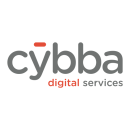In an inbox flooded with marketing blasts, meeting requests and just checking in’s, writing a subject line that stands out is an impressive feat. Following it up with a sales email that inspires an executive to read on and actually respond?
Medal-worthy (if they made medals for that kind of thing).
Cold emailing can be one of the more thankless parts of a salesperson’s job, but when those emails do land, that initial challenge makes it all the more satisfying. For those willing to put in the effort, dropping into a prospect’s inbox is also an opportunity to get creative and have a little fun.
“I try to get as personalized as possible right out of the gate to catch their eye,” says Giuliana LaRose, a business development representative at Lusha. “This takes an extra minute or two for research, but it is worth it if I can increase my open and response rates.”
The recipient shouldn’t feel like the email could have been sent to just anyone; it should be customized, relevant and engaging.
Sales professionals at Allego and Cybba also told Built In Boston the stories of their most successful cold emails, and in both cases, the angle was unique to the sender and the recipient. One reacted to a timely LinkedIn post, while the other sent along a personal photo featuring the prospect’s merchandise, but both used these hooks to start a conversation about the prospect’s business needs and what they had to offer.
Read on for these and more actionable tips for delivering cold emails that convert.
Allego provides learning and communication tools for sales professionals and buyers.
Tell us about one of the most successful cold emails you've sent. What was the subject line? What was the response?
“Subject: For the Father of the ‘Jolly Rancher Seller’.”
One of the most successful cold emails I have ever sent was an email to a sales leader in response to a post he wrote about his son trading Jolly Ranchers at school for other snacks. I was scrolling through LinkedIn and noticed this post and knew instantly how to compare it to what my company offers. The response was almost immediate: He referred me to the right person, shared the email with the company and sent some kind words back.
I have had many positive responses to cold emails, but this one was one of my favorites because it was so fun to write and get creative with.
What is your strategy for writing cold emails? What kind of research do you do leading up to the send?
My strategy for writing cold emails is to be strategical and methodical rather than the “spray and pray” method. I have a lot of different responsibilities in my day-to-day, and I don’t have time to call or email a million people; I need to find the right people and get to them directly.
I like to research the company first to understand if there are any organization-wide focuses or challenges they are going through. This way, I can focus on each prospect and personalize my emails and subject lines to break through the noise and get their attention. This also helps me when doing my call outreach to personalize my voicemails, talk tracks or LinkedIn messages to remind them of my email if they have yet to respond.
I love to find recent LinkedIn posts prospects have made, interests in their bio and “about me” sections and details from LinkedIn cover photos or recommendation sections. Anything I can find that will set me apart, I want to use.
Anything I can find that will set me apart, I want to use.”
Success often only comes after trying and failing. What are some rookie mistakes you’ve made — or that you see other people making — in cold emails? How can people avoid these mistakes?
- Fear: Early on, I was very fearful of reaching out to CEOs, presidents or any high-up leader. I didn’t want to mess up and have them judge me. In reality, though, they likely forgot who I was the moment they hung up the phone or deleted my email. I was so nervous about messing up or not getting the desired response that I would only reach out to lower-level employees, which got me absolutely nowhere. Once I realized that these C-level executives were just humans like myself and that they wouldn’t even remember my mistakes, I was able to reach out and get to power.
- Active listening: I learned you really need to listen to understand rather than listen to respond. To get to pain and help prospects, you have to listen to them and ask questions based on what they said instead of just selling and talking about your product. This is something I still struggle with, but I believe good sellers don’t really have to sell at all; they just need to listen.
- Spray and pray: I learned to focus on personalization and strategizing my approach rather than just sending blasts and mass emails. The biggest lesson I have learned thus far is to do the work because there are no shortcuts.
Lusha gives B2B salespeople the data they need to identify, engage and close prospects.
Tell us about one of the most successful cold emails you’ve sent. What was the response?
Winston Churchill once said, “Success consists of going from failure to failure without loss of enthusiasm.” That said, my most successful cold email was not successful on the first try.
This particular prospect had a podcast I found while going through his LinkedIn posts. Every week, I would listen to this podcast, write relevant subject titles to catch his eye and respond with my thoughts and opinions on a specific topic from the episode. By listening to these podcasts in my downtime, I learned so much about the prospect. He happened to live in my area when he was attending college, and he previously worked for one of my favorite brands.
With the combination of my professional persistence and a “show me you know me” approach, I eventually was able to connect with him. Even though the product was not a fit at the time, I’ve built that relationship for when the timing is right, and we now have a level of trust that we didn’t before my personalized cold outreach.
What is your strategy for writing cold emails? What kind of research do you do leading up to the send?
I try to follow a basic template to keep my initial outreach short and sweet. My initial emails are always four to five sentences max. The first sentence is personalized and relevant (something personal from LinkedIn or about their role, company or product). The second sentence addresses why I am reaching out to them, the third is how we can help and the last is a strong call to action.
Leading up to the send, I always start my research on their LinkedIn profile. If they are active, I’ll go through their recent posts and choose something to reference in the email's subject line and first sentence. This is where you can get creative and let your personality shine through. I find the most success when I show that I am a real person on the other end of the screen, not just a bot blasting out emails. If there is nothing on LinkedIn for me to run with, I will fall back on relating it back to their role or the company.
If not for the mistakes I made when I first started cold outreach, I wouldn’t have progressed to where I am today.”
Success often only comes after trying and failing. What are some rookie mistakes you’ve made — or that you see other people making — in cold emails? How can people avoid these mistakes?
If not for the mistakes I made when I first started cold outreach, I wouldn’t have progressed to where I am today. When I didn’t know better, I would always try and fit everything I wanted to say into my initial first-touch email, then bump it only once and never send an email again after that.
Now I have a consistent cadence that I follow: I send a strong initial email, follow that up with relevant information, then a case study and finally a brief bump. This has been a great strategy for me for building groundswell and trust. When they pick up the phone, they recognize my name and company, even if they just clicked on the emails.
Lastly, always double-check your email before sending; even if it takes that extra minute, it’ll be worth it. There have been times when I have sent an email to someone with the wrong name or company, or I copied and pasted sentences from my messages with colleagues and you can tell. It is always extremely embarrassing. When this has happened, I’ve lost all of the trust and credibility I am trying to build with the prospect — which, at the stage of an initial cold outreach, is not much trust to begin with.
Cybba is a performance marketing company giving e-commerce brands powerful tools to grow.
Tell us about one of the most successful cold emails you’ve sent. What was the subject line? What was the response?
One of my most successful cold emails was with a brand I had unsuccessfully contacted almost a year prior.
On a trip to Portland, Oregon, I stumbled upon a stand that featured a collaboration with the company and purchased a sweatshirt as a souvenir. When I returned to work, I decided to reach out to the CEO again with a personalized subject line, “Brand seen at Moda Center!” In the email, I provided specific ideas on how the company could add value to its current offerings. I also included a picture of myself wearing the sweatshirt to show my genuine interest in their brand.
I received a positive response from the CEO, and we set up a time to connect. I had previously struggled to connect with this company, but by taking that extra step, I was able to show interest and understanding of their ideal target customer, as I was one of them.
What is your strategy for writing cold emails? What kind of research do you do leading up to the send?
My approach to writing cold emails is to personalize them and provide value to the potential client. I usually start by researching the company and the individual I’m emailing, paying close attention to their social media presence to understand what types of campaigns they are currently running. I use this information to tailor my emails to their specific needs, highlighting how our product or service can fill a gap or complement their existing efforts.
To make the emails more engaging, I include relevant pictures and content that add value for the prospect. Taking that extra step to add screenshots when you come across articles or ads goes a long way toward building familiarity.
As a travel enthusiast, I often find inspiration from my trips and use this to develop unique ideas for potential partnerships. However, I always make sure to connect my interests and experiences back to the recipient’s needs and interests. Additionally, I find it helpful to mention when I am a customer of theirs myself and express my other interests to pitch new ideas for getting their brand in front of potential customers.
Success often only comes after trying and failing. What are some rookie mistakes you’ve made — or that you see other people making — in cold emails? How can people avoid these mistakes?
Not standing out! With cold emails, you’re already at a disadvantage, as most people receive dozens of emails daily. How are you going to be different and stand out from the crowd?
The key to success for me has always been providing customization that the person on the receiving end can relate to. Put yourself in their shoes.
One of the biggest rookie mistakes I see is not taking the time to research the recipient and personalize the email accordingly. Sending a generic template email will likely get ignored, but referencing recent news or events related to their industry or company can show that you’ve done your research and are invested in their success.
Our solutions and clients are not one-size-fits-all, so our emails can’t be either.
Another common mistake is sounding too robotic or automated in the email. To avoid this, I always try to write in a personal and authentic tone. Sharing a unique experience with the brand or making a personal connection can show that you are genuinely interested in starting a conversation and building a relationship.
Empathy is key in understanding their pain points and goals and how your product or service can help solve their problems. Our solutions and clients are not one-size-fits-all, so our emails can’t be either.
In addition to personalization and authenticity, following up with a friendly email or providing additional context can also make a difference in getting a response. Many cold emails go unanswered, so sending a follow-up email after a few days can increase the chances of success for your outreach.











